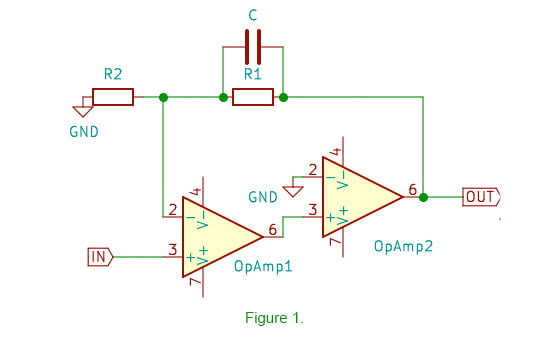Composite amplifiers
The purpose of combining two or more op amps, in a so called composite amplifier, is to achieve improved overall performance. The usual way of cascading is shown on Figure 1.

Increasing the Loop Gain is the most significant benefit of cascading. Let’s say, we have two operational amplifiers (op amps) with gain A1 and A2. The resulting composite amplifier has gain of A=A1*A2, much higher than the individual gains A1 and A2. So the composite device provides a much greater loop gain, and thus a much lower gain error (THD). Since there is a direct correlation between THD level and the sound quality, increasing the loop gain and decreasing the gain error is the most significant achievement, among several others, of the composite design.
In this case the designer should be aware that when an op amp is placed within the feedback loop of another one, stability problems will most probably arise (phase shift rapidly approaching −180◦). There are different approaches to deal with that but I’m not going to dig deep in that subject. Usually the designer needs to combine two or three phase correction techniques for best results.
In our case the composite amplifiers are made by inserting an IC power chip, instead of conventional operational amplifier, in the feedback loop of another operational amplifier. Such a composite amplifier combines the low distortion and offset of the operational amplifier (first stage) and the high-current driving capability of the power chip (second stage). In this way, using a “proper” high-performance op amp and suitable phase correction, the THD of the whole composite amplifier can be as low as -125dB (0.00005%). Sounds great, right?
The amplifiers described here are based on the popular (power op amps) LM1875, TDA7293 and TDA7294.
As the cost of these monolithic IC is ridiculously low and the cost of the op amps is similar, the cost of the whole composite is within the reach of any DIY enthusiast.